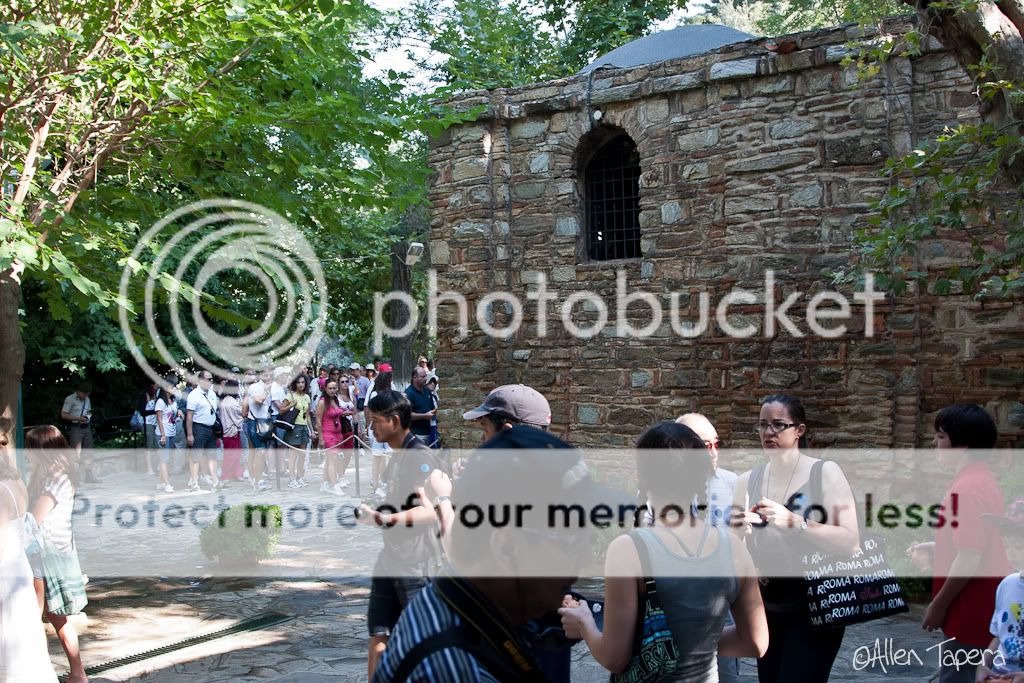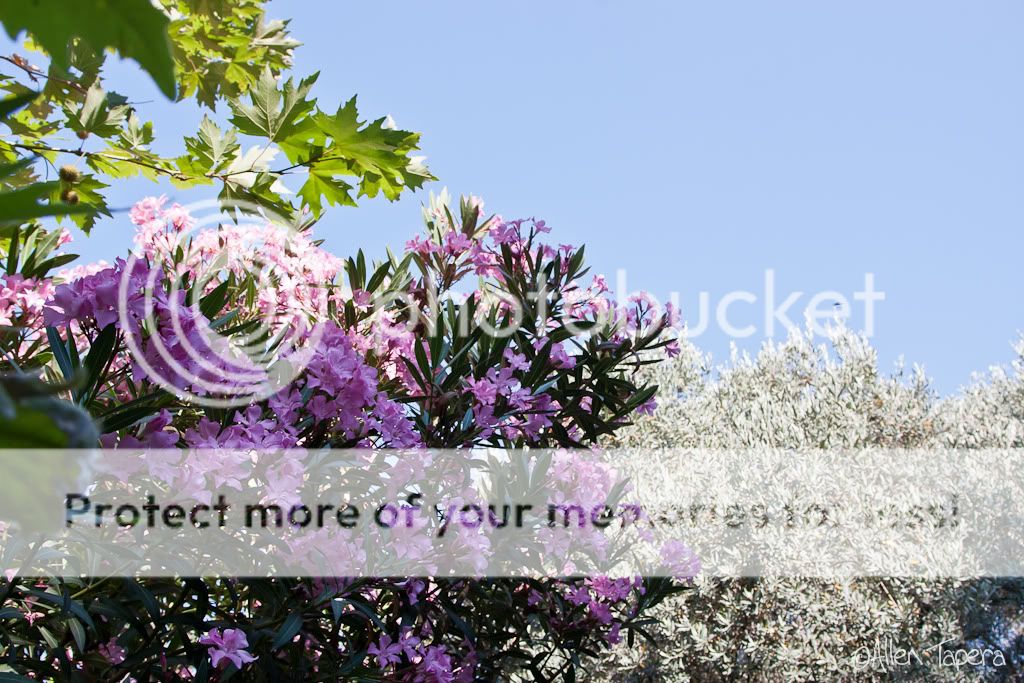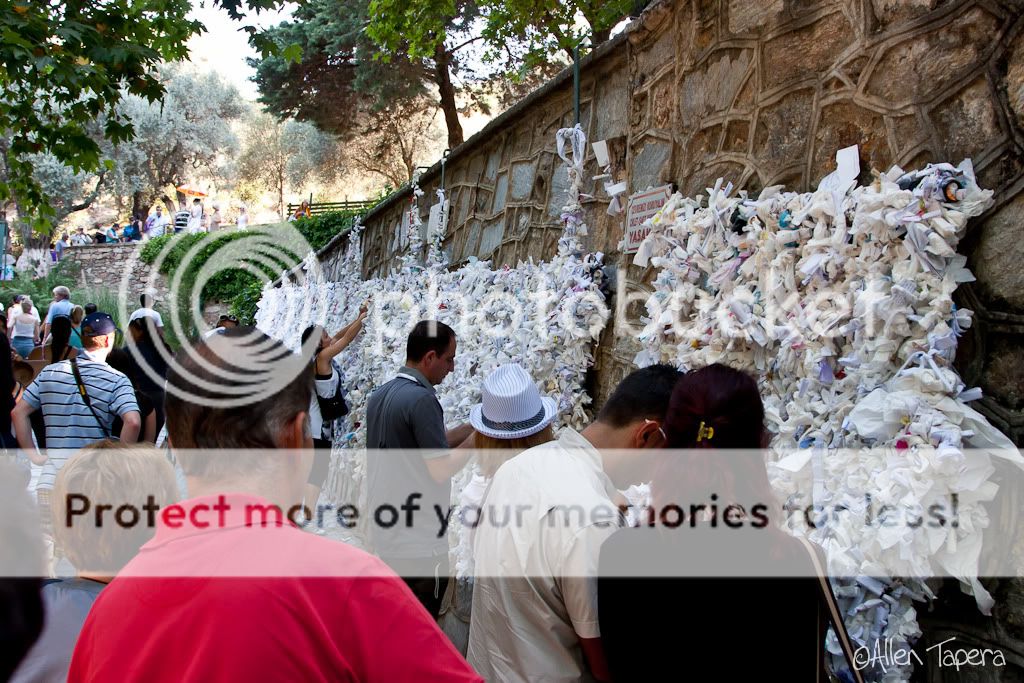 |
| Sunrise in Kusadasi |
We were greeted outside of our numbered bus by our tour guide then received our rations, consisting of a map, water bottle, clay corked jug and other reading materials. Seeing the flag of Turkey waiving in port reminded me why I was glad Beth pushed for a cruise on this trip. Seeing other countries and cultures, first hand, is a great way to not only round your views of the world outside of your home and work life, but also to become well travelled as an individual. This was the farthest east either of us have ever been and out of everywhere we'd been so far, Turkey was by far the most scenic. We were on windy roads showcasing sprawling lush hills and handsome modern homes; we even passed by an amusement park not too far from port in Kusadasi. I didn't expect Turkey to be so western in appearance and this is precisely why getting out of the house is always a good idea.
The first stop on the docket was the House of the Virgin Mary. The concept of this home slightly blew my mind to be honest. I learned a good bit concerning the history of Christianity through Sunday school and the Catholic H.S. I attended as a teen, but what never came up in curriculum was where the Virgin Mary lived the remainder of her life after raising such a famous son. I was also quite fascinated by the fact that unlike what the current national flag of Turkey suggests (unless you are familiar with the Ottoman Empire), it is a historically secular nation albeit with Muslims being the religious majority. That said, antiquity and historical sites representative of Christian, Judaic and Muslim culture are all protected by the Turkish government. We arrived in a heavily wooded area for our first stop in Kusadasi, the House of the Virgin Mary, and were greeted by armed Turkish guards at the entrance.
 |
| The line to the shrine. |
Upon exit there were multiple candle cases setup where people could light candles and offer prayers. There was a nun who came in to dump the lit candles out periodically, sometimes right after someone put a fresh one in the sand, because there was no way to fit them all in at one time. The Virgin Mary's house is a conveyor belt for visitors of all walks of life that runs all day long. There were flowers and lush foliage all around, growing wildly but seemingly 'arranged' at the same time. After exiting the house and passing the candle cases there was a walkway straight ahead that put you on the path back to the entrance where the guards resided. This returning path was lower than the pathway in by about 11ft, and immediately on your right resided a small collection of 'water fountains' all drawing water from the well on this historic site. Tens of people lined up for each fountain with empty plastic bottles and the clay jars we got on the bus...we were told the clay jars weren't quite watertight by our guide and boy was she right ha. Beth's jar leaked immediately so she ended up using her plastic water bottle to hold it until we returned to the ship. The rituals of all the international religious visitors at the fountains was much like snowflakes; no one quite had the same technique or method. Once Beth had her full container, primarily to bring back to her very Catholic grandmother Joan, we marked it to avoid mix-ups later and got back on our way.
 |
| Still not sure what these are. |
Just past the holy water collection area was the vast prayer wall. It's a ~15 yard long stone wall with a hanging panel where you can pin your written prayers on whatever scrap of fabric or paper you can get your hands on. It makes you wonder how often they clear the wall off, because there's only a prayer-note collage outline of what's holding them all up.















No comments:
Post a Comment
comments